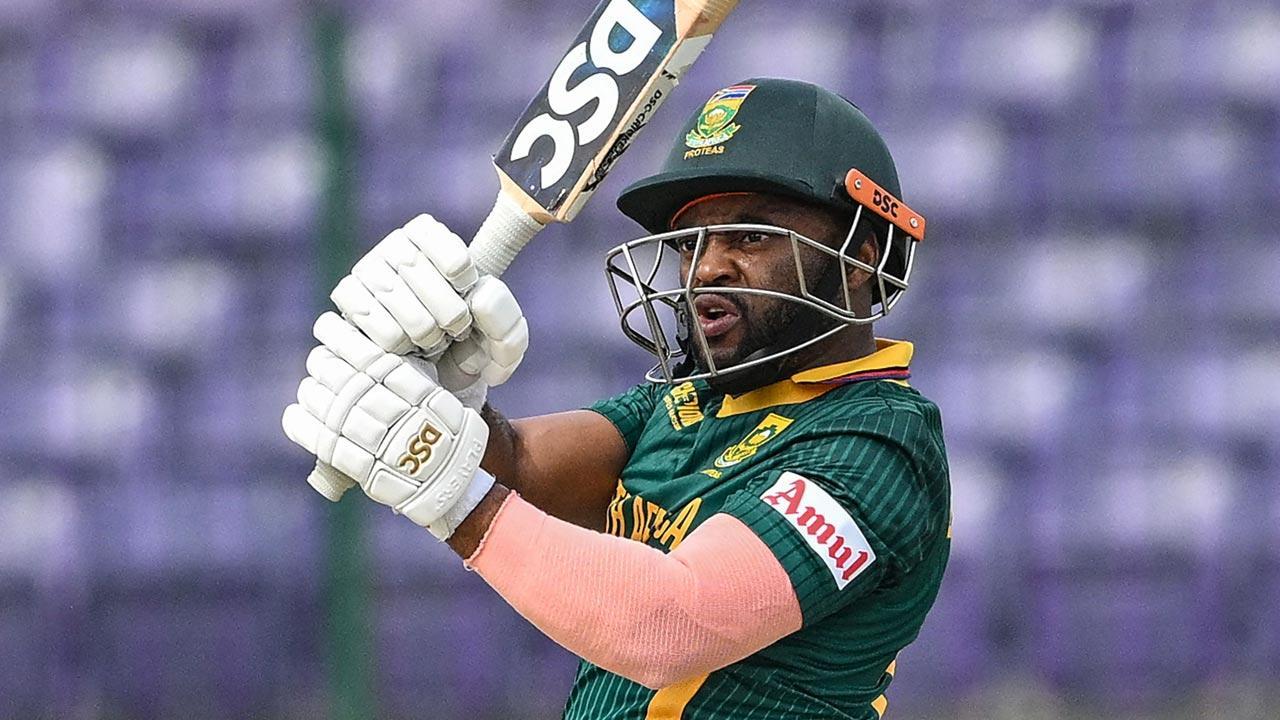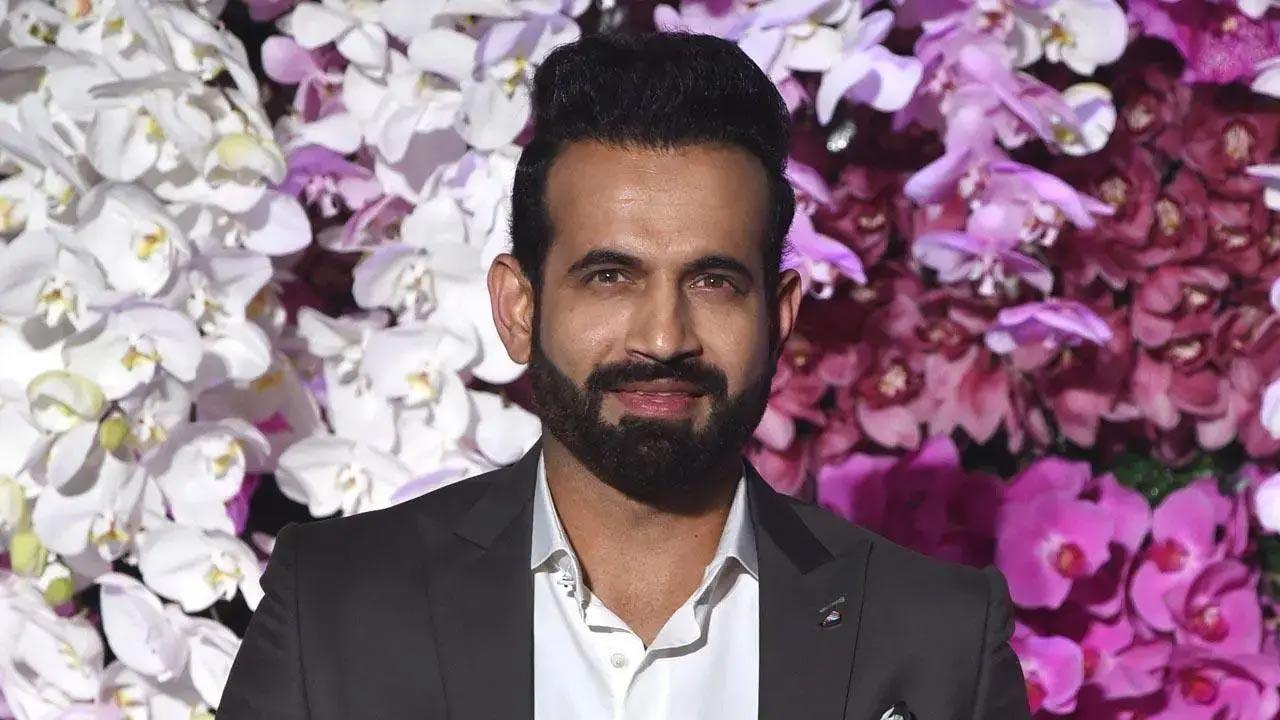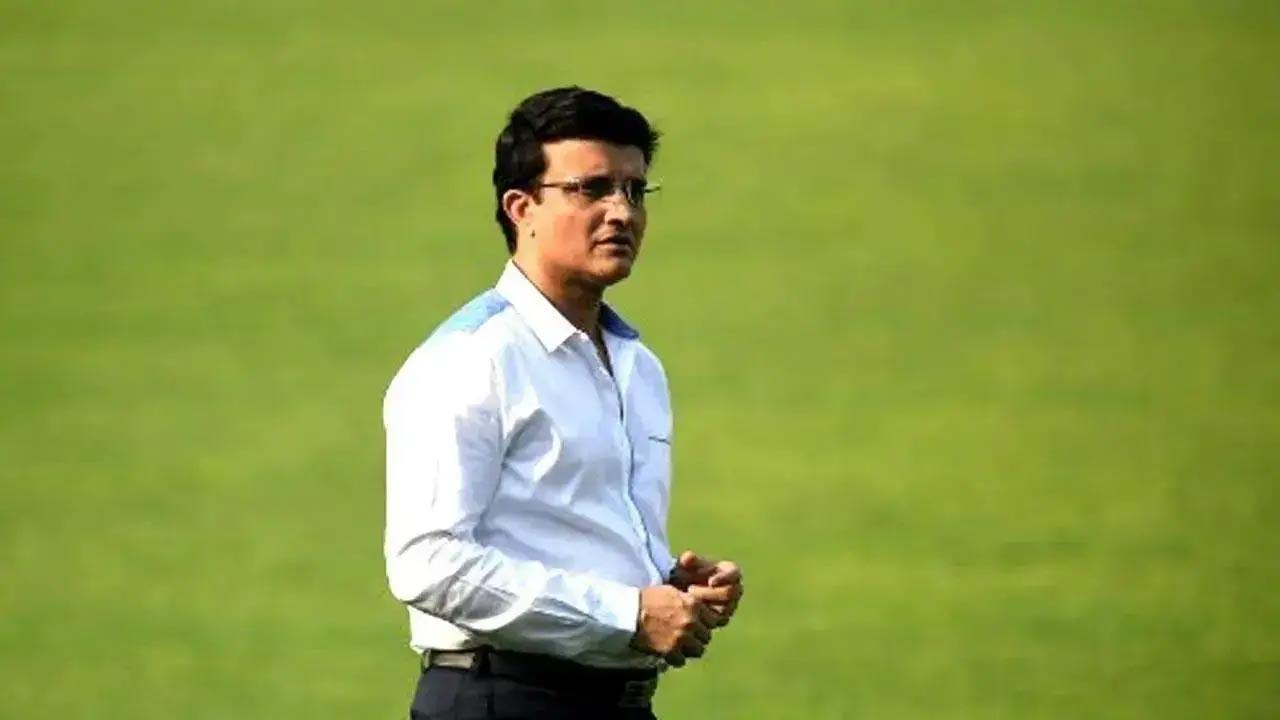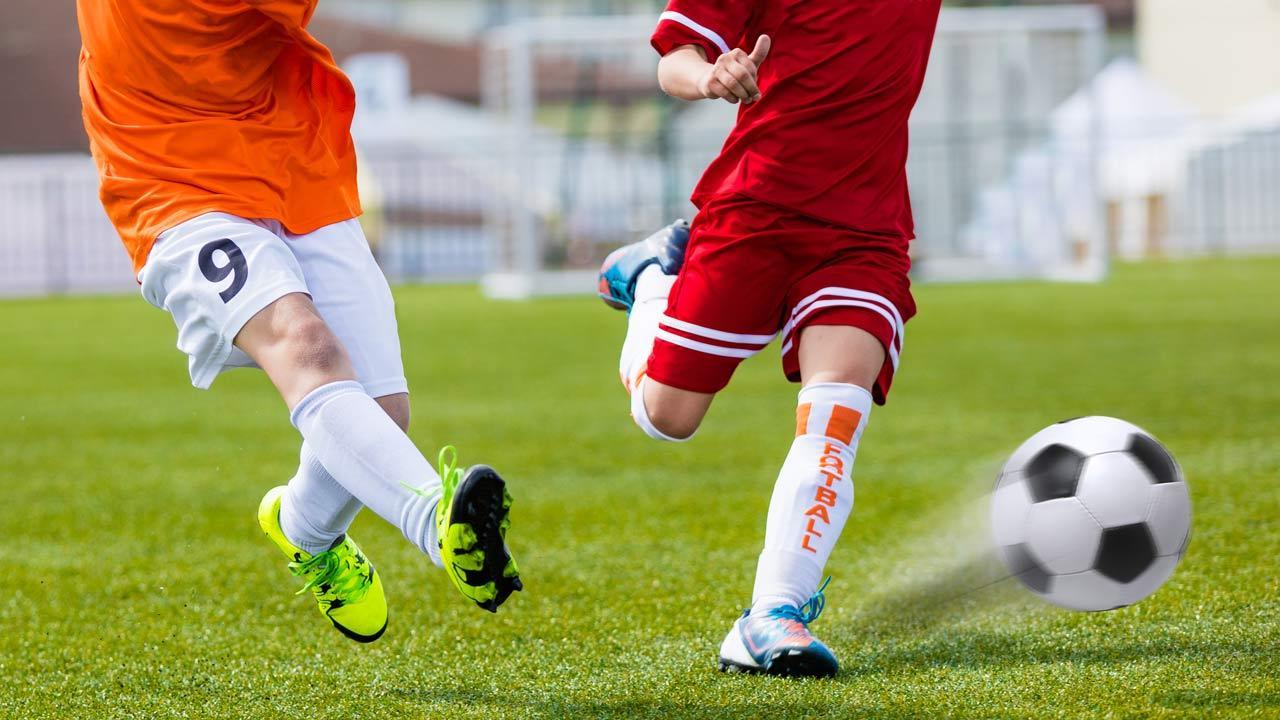
Inflate those orange balls. MLS will kick off its 30th season on Saturday, whether your city is covered in snow or not. MLS is a league that balances young up-and-comers with a handful of aging icons .
Lionel Messi will remain the league’s most recognizable face, as has been the case everywhere he’s played, but there are many fascinating plotlines that’ll play out beyond South Florida. The offseason involved a lot of roster turnover , and many clubs enter 2025 with a point to prove. Many individuals do, too, and there are several intriguing figures heading into the new season – including those who aren’t Messi or share a locker room with him.

With that being said, here’s a 4-2-3-1 base formation of players who merit your attention in 2025, with World Cup hopefuls, rising stars and reclamation projects among them: Goalkeeper: Dayne St. Clair, Minnesota United After a few years backing up Vito Mannone and alternating starts with Tyler Miller, St. Clair has had a clear perch atop the Loons’ depth chart since 2022.
Like many GK products out of the University of Maryland, he arrived in MLS with plenty of promise and a refined grasp of the role’s mechanics. 2024 was a big year for him. Milan Borjan’s advanced age and Maxime Crepeau’s form after a horrific leg break in MLS Cup 2022 vaulted St.
Clair up Jesse Marsch’s pecking order for Canada’s national team. St. Clair has started four of Canada’s last six games, beginning with the Copa América third-place match against Uruguay.
With a World Cup on home soil less than 500 days away, he’ll want to be at his best — and that starts with showing more consistency than he provided Minnesota in a bounce-back year for the club. Listed at 6-foot-3, St. Clair has many skills requisite to be a top modern goalkeeper.
His reflexes are keen, he’s fired up when the stakes are highest, and he has improved his sweeping actions and short-range passing over the years. The trick now will be to put it all together and seldom let his form wane for a team that could contend at the top of the Western Conference. Having an elite keeper could make all the difference for such an otherwise balanced squad.
Advertisement Right back: Reggie Cannon, Colorado Rapids When the former FC Dallas homegrown left MLS in 2020, his move to Boavista was seen as a chance to cement his standing ahead of the World Cup. His time in Europe ultimately failed to provide that kind of season, as a messy split with the Portuguese club resulted in a brief move to Queens Park Rangers, which also ended with a contract termination. Cannon quietly arrived in Commerce City last fall, becoming a starter down the stretch as the Rapids limped toward the playoffs.
Colorado won just one of the seven games he started, which unfortunately included both legs of their 9-1 thrashing at the hands of the eventual champion LA Galaxy. Cannon still won’t turn 27 until this summer, and right back remains a thin area for the USMNT. He could yet play his way onto Mauricio Pochettino’s World Cup radar.
He’ll have to hold off Keegan Rosenberry in Colorado, and younger alternatives in MLS like Jake Davis and Nathan Harriel will also hope to make an impression. But Cannon claimed “ (he’s) all good ” after a gruesome-looking injury in Tuesday’s Concacaf Champions League matchup with Los Angeles FC. If he’s able to log a full season as one of MLS’s best right-backs, his international career could be revived.
Centre back: George Campbell, CF Montréal At this point, Colorado and Montréal have become the standard-bearers of taking underdeveloped players off of MLS rivals and giving them a better chance at regular minutes. The tradeoff, often, is that these unpolished gems shine a bit brighter — and Campbell is certainly an example. Montréal acquired the Atlanta United homegrown centre back ahead of the 2023 season for up to $900,000 of GAM.
His second year with the club was revelatory, as he was proficient when building possession out from the back in new coach Laurent Courtois’ system, while still performing above league average with his underlying defensive metrics — especially his aerial and on-ground duel win rates. Campbell will only turn 24 in June and already has made considerable strides with his development since leaving Georgia. Center back is an open question ahead of the 2026 World Cup, and it isn’t ludicrous to think Campbell could make a strong case after debuting for the USMNT under Pochettino in January.
He’ll work to form a tandem with Montréal’s latest reclamation centre-back, former LA Galaxy defender Jalen Neal. Advertisement Along with the rest of the squad, Montréal may be best positioned of MLS’s three Canadian clubs to make the postseason. Centre back: Nicksoen Gomis, Toronto FC When MLS teams take fliers on underdeveloped prospects from abroad, it’s almost always an attacker or midfielder.
Young players command higher transfer fees given their untapped potential, and MLS’s roster rules are curated in such a way that clubs prioritize higher-upside box score contributors in the U-22 Initiative and their TAM-level signings. Besides: a crucial part of defending is being able to read a game and anticipate, which are traits more prevalent in veterans than rising prospects. Since closing their dynastic late 2010s, Toronto hasn’t done much in line with MLS standard practice.
Their opulent investment in wages for Lorenzo Insigne has royally backfired, costing Bill Manning his job last summer and digging the Reds into a deep pit of despair for the past couple of years. However, they unearthed one possible developmental project: Gomis, a centre-back who made just one first-team appearance across nearly six years with Sheffield United and Beerschot. After signing just before the start of 2024, Gomis eventually became a starter.
There’s a lot left to refine in his game, but he performed surprisingly well in what was truly his first consistent runout at a professional level. Of the 92 players who logged at least 900 minutes at centre-back, only 12 were 23 or younger. It’s surprising, then, to see that Gomis was arguably MLS’s best centre-back in terms of tackling effectiveness and among its stingiest when opponents tried dribbling past him.
True tackles are the total tackles, challenges lost and fouls when attempting a tackle. The win rate is the real kicker; more often than not, Gomis makes an impact when going into a challenge. Advertisement Toronto might be a tough watch until Insigne’s contract expires in June 2026; however, keep tabs on Gomis to see if he can be a rare success story in terms of an MLS club developing an international defender.
Left-back: Pedro Amador, Atlanta United You’ll be forgiven if you didn’t realize Amador played one of the most memorable assists in recent MLS history. While many of us were hooting and hollering while Tomas Aviles tried reviving the early 2010s “planking” craze during a defensive sequence, it was Amador who looped a ball to Bartosz Slisz to knock Inter Miami out in the first round of the playoffs. Bartosz Slisz said SURPRISE! 🤩 #UniteThe404 x #MLSCupPlayoffs pic.
twitter.com/TO8DcZOhnW — Atlanta United FC (@ATLUTD) November 10, 2024 A summer signing from Moreirense, the Portuguese left-back was an immediate hit with Atlanta, accumulating eight assists in just 1,218 minutes. Atlanta has revamped its attack, spending big to bring in Emmanuel Latte Lath on a record fee and bringing Miguel Almirón back from Newcastle.
The hope is that, under new coach Ronny Deila, Atlanta can revive that “unstoppable freight train” energy that typified its 2018 title run led by Almirón and Josef Martínez. The high-end changes shouldn’t hurt Amador in the least. Deila’s last MLS team, New York City FC, was at its best under him from the start of 2021 (a season that ended with an MLS Cup title) through his departure in June of 2022 — a 51-game sample.
Although his chief chance creators were along the line beneath his striker, his next most prolific creative player was his left back, Gudmundur Thórarinsson, who averaged 1.95 chances created per 90 minutes and 2.9 per 100 touches.
Amador might be an even better crosser than Thórarinsson, too. While defenses are trying to keep up with Almirón, Latte Lath, Alexey Miranchuk and Saba Lobzhanidze, Amador could be well-positioned to generate the team’s best looks. Don’t be surprised if he challenges for the assist crown at season’s end.
Central midfield: Obed Vargas, Seattle Sounders In the second decade of MLS’s dedication to youth academies, teams can more dependably develop players for their first team. Seattle has a particular knack for bringing up two-way midfielders, with Josh Atencio (who was traded to Colorado), Danny Leyva and Vargas all contributing to their run to the 2024 Western Conference final. Vargas undoubtedly has the highest upside, a true multi-tool midfielder whose awareness during a match exceeds expectations for a 19-year-old.
He broke out last season, logging 2,841 minutes, and was especially sharp defensively and in his tactical fouling. He’ll hope to better refine his pass selection in 2025. Vargas is a Mexican-American who completed his one-time FIFA switch to represent Mexico and made his senior El Tri debut (against the U.
S.) in October. This summer’s FIFA Club World Cup will be another shop window showcase for a player with many suitors.
Whether he becomes a summer target or sticks around through 2025, Vargas has what it takes to make a major impact this season and be a crucial part of Mexico’s next generation. Advertisement Central midfield: Luca de la Torre, San Diego FC Every expansion team loves fielding a native son, someone that local fans can immediately rally behind when everything is new. De la Torre isn’t just here to garner goodwill — he’s going to be a vital part of Mikey Varas’ system from the jump.
A Fulham product, the 2022 World Cup veteran’s career truly took off after a 2020 move to Heracles Almelo and a 2022 transfer to La Liga’s Celta Vigo. A coaching change ahead of 2024-25 and some ill-timed injuries buried De la Torre deep within Celta’s depth chart, and he’s here on an initial loan. De la Torre is a great ball progressor, able to shuttle through tight spaces in midfield and play accurate passes in the channel and up the wing.
That will help feed star winger Hirving ‘Chucky’ Lozano, but could also help restate his case to make a second World Cup squad. Central midfield is arguably the pool’s deepest point, and the 26-year-old hasn’t yet been selected by Pochettino. Maybe his homecoming will keep him in the U.
S. picture. Right winger: Cristian Espinoza, San Jose Earthquakes Since MLS decoded Matias Almeyda’s man-marking system in 2019, the Quakes have struggled to keep up with MLS’s growth.
They’ve been pretty bleak since winning the 2012 Supporters’ Shield: 12 seasons, two first-round playoff exits and one cameo in the 2023 play-in round. Despite the team around him, Espinoza has been an unheralded star. The 29-year-old Argentine has logged 71 assists since joining San Jose in 2019.
That’s the second-highest tally of any MLS player over the last six seasons, only trailing 2021 MVP Carles Gil. You’d be forgiven if you’ve missed Espinoza’s run. San Jose hasn’t been worthy of appointment viewing very often during his tenure.
That should change in 2025, as Bruce Arena is back in the technical area of MLS stadiums, and one of the league’s best strikers, Chicho Arango, is in tow as well. With a better team around him, maybe this is the year Espinoza finally lands on the year-end Best XI. Advertisement Attacking midfielder: Diego Luna, Real Salt Lake Since emerging midway through the 2023 season, Luna has been among the best young domestic players in MLS.
He was a full-time starter last year, helping Real Salt Lake to a fourth-place finish in the West and a serious challenge for the conference title until late in the regular season. Luna was capably contained in the playoffs, however, and RSL watched as Minnesota swept them in two games. Despite his considerable skillset and performances, Luna has been oft-overlooked by U.
S. Soccer. He wasn’t selected for the 2023 U-20 World Cup squad, and turned down an offer to be an Olympic alternate, but Pochettino brought him in for his January camp and he earned rave reviews for his creativity and “big balls” alike .
If you’re sensing a theme, it’s for a reason: this is the season for U.S. hopefuls to provide a healthy sample size upon which to base their World Cup cases.
Luna could be a fantastic change-of-pace option for Pochettino, but another eight-goal, eight-assist season is unlikely to vault him into contention ahead of Gio Reyna, Malik Tillman and Brenden Aaronson (among others). If Luna has another level to hit, this is a perfect time to show it. Left winger: Wilfried Zaha, Charlotte FC Since leaving Crystal Palace after the 2022-23 season, Zaha has been something of a nomad.
He was unable to stick in Galatasaray’s lineup and found even fewer minutes during an autumn loan to Lyon. He’s now with Charlotte on an initial loan, with the MLS club having an option to extend until his Galatasaray contract ends in June 2026. Zaha was a famously frequent target of opponents’ toughest tackles during his time in London, and there’s reason to worry that the battering he took left him ripe for a swift regression as he ages, especially as a player known for his breakneck speed in his prime.
In truth, this signing feels very similar to when Orlando City acquired Nani in 2019, adding a one-time Premier League star winger who struggled to find firm footing after leaving England. Orlando benefitted greatly, vaulting up the Eastern Conference during his tenure. If Charlotte can enjoy a similar impact and Zaha can make an All-Star squad or two, it could help them go from a playoff qualifier to a legitimate dark-horse challenger.
Striker: Leo Campana, New England Revolution Inter Miami’s fondness for young South Americans predates Messi’s arrival, and Campana looked to be among their brightest imports when he joined in 2022. He spent that year backing up Gonzalo Higuaín, then was a rotational figure in the club’s transformative 2023 and Luis Suárez’s backup in 2024. At long last, an offseason trade to New England gives the Ecuadorian leading-man status.
Despite his inconsistent utilization, Campana rippled the net 26 times in his three seasons, a return exceeding the “goal every other game” standard for a high-end striker. We’ll see how he translates to a higher complement of full-90 shifts, but Caleb Porter has a penchant for getting good goal returns from his strikers. With Gil pulling the strings and a lot of fresh faces settling in alongside him, Campana could bolster his case to stay in Ecuador’s World Cup qualifying core.
(Top photo: Cal Sport Media via AP Images).















